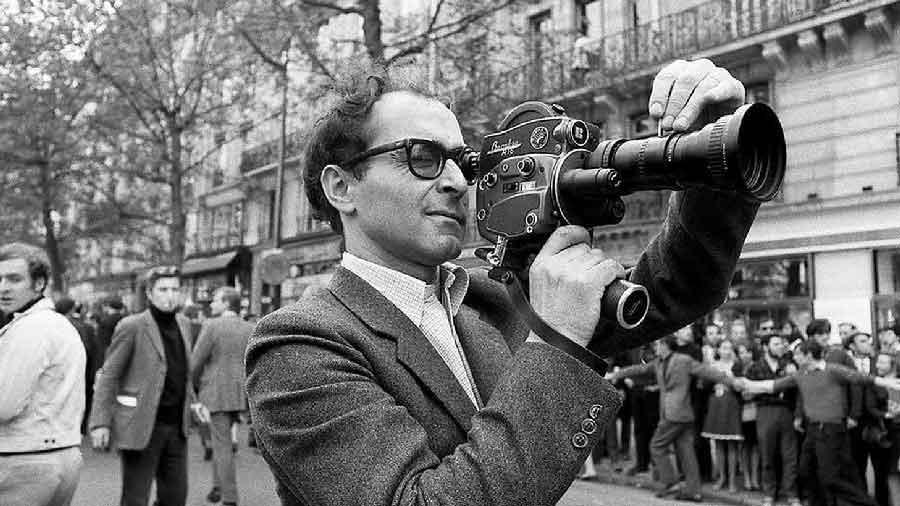France has lost "a national treasure," said French President Emmanuel Macron, reacting to the death of Franco-Swiss filmmaker Jean-Luc Godard on Tuesday.
One of the most influential film directors, who was often credited with revolutionizing cinema, Godard died by assisted suicide, reported The New York Times.
"He could not live like you and me, so he decided with great lucidity, as he had all his life, to say, ‘Now it’s enough,’” his longtime legal adviser, Patrick Jeanneret, said in a phone interview to NYT.
"Godard wanted to die with dignity," Jeanneret said, and “that was exactly what he did.”
French President Emmanuel Macron said France lost "a national treasure" with Godard's death. Many others paid tribute to the master filmmaker.
Godard was one of the leading figures of the movement. Critics rated him among the top 10 directors of all time, and he has had a direct influence on the likes of Quentin Tarantino, Bernardo Bertolucci, Steven Soderbergh and Martin Scorsese, reported Deutsche Welle.
Godard was one of the leading figures of the movement. Critics rated him among the top 10 directors of all time, and he has had a direct influence on the likes of Quentin Tarantino, Bernardo Bertolucci, Steven Soderbergh and Martin Scorsese.
French President Emmanuel Macron said France lost "a national treasure" with Godard's death.
Interest in anthropology influenced filmmaking style
In the late 1950s and early 1960s, a small group of French filmmakers turned the cinema world on its head. They called themselves the Nouvelle Vague — or New Wave — and they broke all the established rules of filmmaking.
Born in Paris on December 3, 1930, Godard moved to Switzerland with his family at age 4. For much of his youth he lived on the Swiss side of Lake Geneva, where his father, a physician, ran a clinic. He returned to Paris after the war, to complete his baccalaureate.
He studied at the University of Paris and planned to pursue a career in anthropology. Although he never completed his degree, his interest in ethnology informed his filmmaking style, as he would use documentary film techniques to create what became called "cinema verite."
His interest in films blossomed in 1950, when he joined the Ciné-Club du Quartier Latin. There he met Claude Chabrol and Francois Truffaut, who would also become influential members of the Nouvelle Vague. Initially though, his interest in films was purely as a critic. He wrote for the publication Cahiers du Cinema.
It wasn't until 1954 that he was inspired to make his first short film, while working as a laborer on the Grand Dixence dam in Switzerland. With a borrowed camera, he shot Operation Beton (1954; Operation Concrete). The construction company bought the film and used it for publicity purposes.
Breaking all the rules
A keen admirer of German playwright Bertolt Brecht, Godard wanted to translate Brecht's concept of "epic theater" into the language of film. Over the next few years, Godard, Truffaut and others worked to produce a series of short films. They developed a new take on filmmaking, using lightweight equipment, natural lighting, long takes, sometimes with improvised dialogue. The established rules of filmmaking and narrative continuity fell to the cutting room floor.
Then in 1960, Godard made his first feature film, A Bout de Souffle (Breathless). The film, produced by Francois Truffaut and starring Jean Seberg and Jean-Paul Belmondo, was the turning point in his career.
A Bout de Souffle heavily referenced American film noir of the 1940s and 50s, but also combined the Nouvelle Vague's groundbreaking new techniques. The story of a car-thief who shoots a policeman and is then turned over by his girlfriend used hand-held camera work, incidental lighting, actor monologues to camera and jump-cuts.
It was the start of his most successful and influential period of filmmaking.
A new tsunami of creativity
Between 1960 to 1967 was a period of intense activity for Godard, in which he made the dozen films which form his Nouvelle Vague canon.
The most successful was the 1963 feature Le Mepris (Contempt), starring Brigitte Bardot. It was the most expensive film he made, and his only orthodox film, though it took Nouvelle Vague techniques and solidified them as the accepted way of modern cinema.
After Pierrot le Fou (1965), his second film starring Belmondo, he was asked to direct Bonnie and Clyde, but he knocked back the offer, saying he distrusted Hollywood.
Godard's political views had already appeared in films such as Le petit soldat, about the Algerian War of Independence. But in his final film in the Nouvelle Vague genre, Week-End, he delivered a scathing attack against consumerism and bourgeois society. Then in the closing credits, instead of simply "Fin," he screen lit up with "Le Fin du Cinema," or "The End of Cinema."
With reports from The New York Times and Deutsche Welle syndication services










